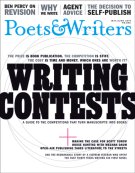In contrast to distracting tweets and fleeting blog posts, Little Star, a new annual of poetry and prose based in New York City, is "dedicated to the proposition that engaged readers need reading that fills their appetites...when so much of our reading comes in such small bites." The inaugural issue features a host of big-time writers, including Lydia Davis, Seamus Heaney, Paul Muldoon, and Padgett Powell, along with a handful of debut authors. Editor in chief Ann Kjellberg, a former editor of the New York Review of Books, is currently reading submissions for the second issue.
Still Crazy, the two-year-old biannual based in Columbus, Ohio, written by and about people over the age of fifty, is looking for poetry, short stories, and essays that "challenge patronizing, sentimental, or stereotyping attitudes toward aging."
In March Lorin Stein was named editor of the Paris Review, the fifty-seven-year-old quarterly that, until recently, had been edited by Philip Gourevitch. (Gourevitch, who succeeded the late George Plimpton in 2005, announced last November that he was stepping down to return to writing full-time.) Despite the changes to its masthead, the prestigious magazine continues to accept submissions of poetry, fiction, and nonfiction from emerging writers; see the Web site for details.
Established in 1915, the Southwest Review, the third-oldest continuously published literary quarterly in the United States, is celebrating its ninety-fifth anniversary with a special double issue on the theme of "Style as Performance/Performance as Style," published in April. Edited by Willard Spiegelman, an English professor at Southern Methodist University in Dallas, where the journal is based, the Southwest Review accepts submissions of poetry, fiction, and nonfiction from September through May.
The Spring/Summer issue of Alaska Quarterly Review, the twenty-seven-year-old journal published at the University of Alaska in Anchorage, was guest edited by Amy Hempel and includes "innovative fiction" by twenty-one emerging and established writers, including O. Henry Award winner Patricia Lear and National Book Award winner Lily Tuck; poems by Todd Boss and Jeanne Emmons; and an essay by Arnold G. Nelson titled "How to Write a Good Sentence: A Manual for Writers Who Know How to Write Correct Sentences."
To celebrate "ten years of this little kickass magazine," DIAGRAM, the online journal of text and art that invites submitters to "make us love you" and is edited by Ander Monson and published by the English department at the University of Arizona in Tucson, recently released a special issue in the form of a playable deck of cards adorned with poems and prose—by authors such as John D'Agata, Paul La Farge, and Ben Marcus—and, of course, diagrams.
Linebreak, a free online journal updated every Tuesday, offers three options for readers looking for a manageable dose of poetry: Subscribers can choose to receive poems via e-mail, RSS, or as a weekly audio podcast through iTunes. (Contributors include Bob Hicock, D. A. Powell, and A. E. Stallings.) And while many journal editors take a summer hiatus, Linebreak's Ash Bowen, Jennifer Jabaily, Ashley McHugh, and Johnathon Williams accept submissions year-round.








